Mastering the Perimeter of a Rectangle: A Child's Guide
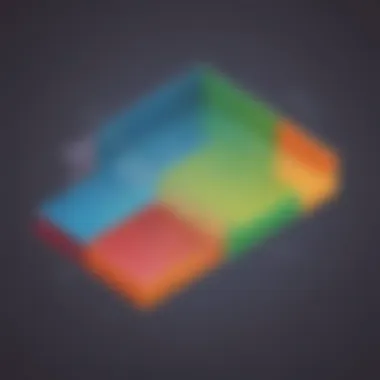
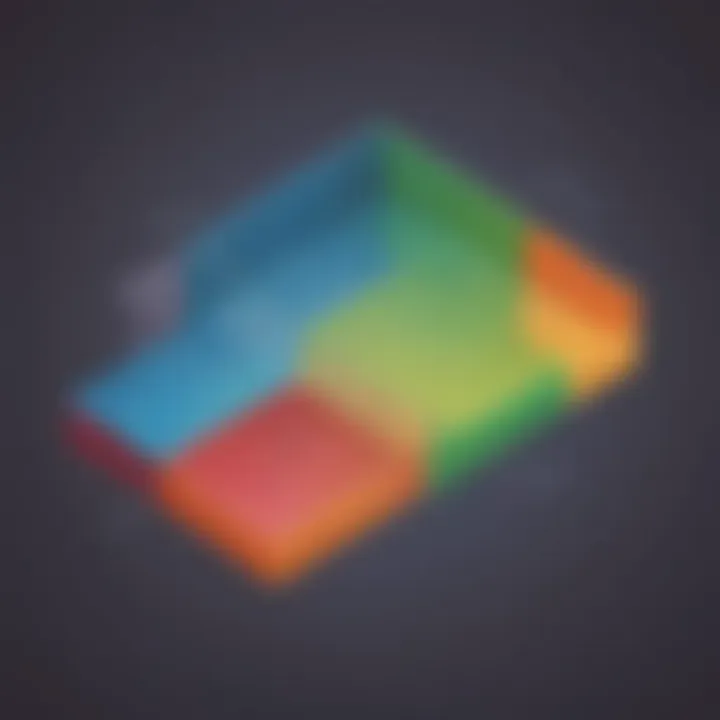
Intro
Let's explore this topic step by step, digging into formulas and how they apply. We'll also focus on fun activities that will make learning this subject engaging for children and useful methods to overcome common misunderstandings.
Creative Activities
Craft Ideas
To help children grasp the concept of the perimeter of a rectangle, engaging in hands-on craft activities can be a valuable strategy. For instance, creating a rectangular garden plot using string and garden stakes allows students to practically measure the perimeter. Alternatively, they can use colored paper to form rectangles, emphasizing the process of measuring each side accurately.
Step-by-Step Guides
Here are simple steps to create a craft project involving perimeter calculations:
- Materials Needed: Gather colored paper, scissors, a ruler, and a pencil.
- Drawing Rectangles: Draw various sizes of rectangles (e.g., 4 inches by 2 inches, 6 inches by 3 inches).
- Measure Each Side: Teach students to measure the length and width of each shape.
- Calculate the Perimeter: Remind students of the formula, which is P = 2 * (Length + Width).
- Color and Cut: Allow kids to color and cut their rectangles out.
Educational Value
These crafts not only introduce students to the geometry of rectangles but also enhance hand-eye coordination and improve their measurement skills. Engaging young learners this way promotes interest in mathematics through creative expression.
Fun Quizzes
Quiz Topics
Quizzes serve as an effective way to assess the understanding of primary concepts. In this context, quizzes can cover various aspects of the perimeter of rectangles, including:
- Understanding the formula
- Calculating perimeters of provided dimensions
- Identifying sequence of steps for calculation
Question Types
To maintain engagement and interest, these quizzes can have diverse question types:
- Multiple choice, where students select the correct answer.
- Fill-in-the-blank questions to encourage active recall.
- True or false statements to clarify common misconceptions.
Knowledge Reinforcement
These quizzes reinforce learning by offering immediate feedback. They enable students to identify areas requiring more focus and students have the opportunity to improve their studies through them, moving towards competence in perimeter calculations.
Fact-Based Articles
Topics
Several articles complement the topics discussing the perimeter of rectangles. These topics cover aspects like the basic properties of a rectangle, deeper insights into geometry, and how to apply perimeter concepts in various contexts.
Engaging Content
The articles present information in a straightforward, accessible way. Benefits to learning include filled examples and relevant visuals that aid understanding.
Prolusion to Rectangles
Rectangles are fundamental shapes in geometry, both in mathematics and in the real world. They are everywhere, from the pages of books to the screens of our devices. Understanding rectangles provides groundwork for grasping more complex shapes and geometrical concepts later on. In the context of learning about perimeter, rectangles offer a logical starting point. They have predictable patterns and properties, making it easier to move into calculations of perimeter.
What is a Rectangle?
A rectangle is a four-sided polygon, also called a quadrilateral. It has opposite sides that are equal in length. Each angle in a rectangle measures 90 degrees, demonstrating that it is a special type of parallelogram. Rectangles come in varied dimensions; the length can differ from the width. This fundamental shape helps illustrate many mathematical principles encountered throughout life.
Key features of a rectangle include:
- Four right angles: Each of the four interior angles is a right angle, which helps maintain its rectangular structure.
- Opposite sides are equal: This means that if one side measures, say, 5 meters, the side directly opposite to it also measures 5 meters.
- Diagonals are equal: The lines drawn from one corner to the opposite corner bisect each other and are of equal length, contributing to symmetric properties.
Understanding what a rectangle is will set the stage for deeper exploration of other aspects, including calculating its perimeter. Therefore, recognizing rectangles in everyday contexts strengthens numeracy skills and intuition, especially among young learners.
Properties of Rectangles
The properties of rectangles are integral to not just defining them but also grasping advanced geometric concepts. Rectangles offer insights into symmetry, area, and important calculations. Here are several key properties:
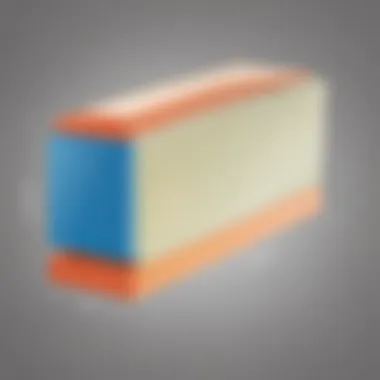
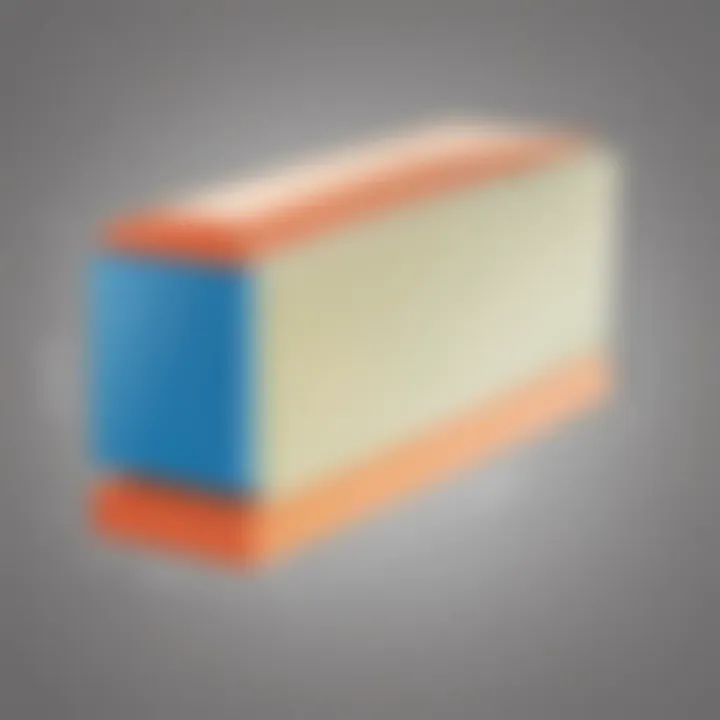
- Symmetry: Rectangles display bilateral symmetry. This means if you draw a line down the middle, both halves mirror each other perfectly.
- Area Calculation: The area of a rectangle is easily computed using the length and width, represented by the formula Area = length × width. Knowing how to calculate area is critical as it links to many practical applications.
- Perimeter Calculation: The perimeter can also be easily determined. This means gauging the total distance around the rectangle only requires basic operations. This leads directly to our focus on perimeter.
The properties establish the basis for simple relationships among geometric figures. Learning them is key not only for understanding rectangles better but also for developing the analytical thinking necessary to solve various mathematical challenges. Their structured qualities may motivate students to appreciate geometry beyond the classroom.
Defining Perimeter
What is Perimeter?
Perimeter refers to the total distance around a two-dimensional shape. For geometric figures such as rectangles, it is the sum of the lengths of all sides. When dealing with a rectangle, the calculation becomes more straightforward because opposite sides are equal in length. Therefore, the perimeter can be expressed simply.
The formula for the perimeter of a rectangle is:
P = (length + width)
In this formula, P stands for perimeter, while length and width represent the rectangle’s dimensions. This means to find the perimeter, students only need the two dimensions. This simplicity is valuable in both mathematical applications and everyday situations.
Importance of Understanding Perimeter
Understanding the perimeter is not just about working with theoretical mathematics. It has practical implications in various aspects of life. For instance, knowing the perimeter can help one make informed decisions when purchasing fencing for a garden or planning the layout of a room.
- Real-World Application: Estimating the amount of material needed for projects.
- Problem-Solving: Enhance problem-solving skills which are vital in all academic subjects.
- Planning and Measurement: Understanding spatial arrangement can improve skills in geometry and design.
For students, mastering perimeter themes lays the foundation for more advanced topics. Once students understand how to calculate perimeter, they can more easily grasp related concepts, like area and volume, providing a rounded education in mathematics.
Understanding perimeter provides practical knowledge that enriches one's ability to interact with the physical world effectively.
The Formula for Rectangle Perimeter
Understanding how to effectively calculate the perimeter of a rectangle serves as a fundamental mathematical concept. This knowledge is vital for engaging with various everyday situations, from measuring a room to deciding the amount of fencing needed for a garden. Grasping the formula enhances problem-solving skills and promotes logical thinking. By starting with the basic mathematics involved with perimeter, students and parents can lay a solid groundwork in geometry and arithmetic.
Understanding the Formula
The perimeter of a rectangle is calculated using a simple formula: P = 2(L + W), where P is the perimeter, L is the length, and W is the width of the rectangle. This formula arises naturally from the definition of perimeter itself, which represents the boundary line that surrounds a shape. By adding the length and the width and then multiplying the sum by two, we account for all four sides.
Key Points:
- The formula helps visualize how each side contributes to the total distance around the rectangle.
- It emphasizes the relationship between length and width, making the geometry more relatable.
Understanding why each component is included deepens the learning experience. It raises questions, such as “What would happen if we change the values of length and width?” Simple explorations can lead to broader discussions about geometric shapes in general.
Breaking Down the Components
To fully appreciate the formula, let’s break down its components:
- Length (L): The longer side of the rectangle. It is important because altering this value positively or negatively affects the total perimeter.
- Width (W): The shorter side of the rectangle. As with length, changing this value will also impact the perimeter.
Using these definitions, students can practice by replacing these values with measurable dimensions from real life—for example, a favorite book, piece of parchment, or any rectangular object around them.
Understanding shapes practically enhances memory retention for children and creates a tangible learning environment.
When guidance is mixed with genuine context, learning transforms into exploration. By diving deep into the individual components, the formula becomes less intimidating and more understandable, allowing students to envision the tools necessary for measuring size and space effectively. Whether for presentation in a school project or versatile applications in home renovations, knowing the perimeter opens up a wealth of possibilities.
Step-by-Step Calculation
Understanding how to calculate the perimeter of a rectangle should not feel intimidating. By breaking it down into manageable steps, it allows learners to grasp essential mathematical concepts more effectively. These step-by-step calculations help avoid confusion and set a clear path towards success in math. They serve as foundational skills which can be useful in various real-world contexts. For young learners, these steps ensure that she or he can visualize their thought process. Also, it can enhance their critical-thinking skills through detailed analysis.
Identifying Length and Width
To begin calculating the perimeter of a rectangle, one must first identify length and width. The length of a rectangle is the longer side, while the width is typically the shorter side. Both dimensions are crucial for accurately calculating the rectangle's perimeter, as each contributes to the total measurement.
Considerations When Identifying Dimensions
- Standard Terminology: Often, confusions arise regarding labeling dimensions. It's useful to refer to the longest side as length and the shorter side as width.
- Units of Measurement: Length and width should be measured in the same units (e.g. centimeters, meters). Misalignment here may lead to incorrect calculations.
- Physical Representation: Drawing the rectangle and labeling sides can help learners visualize both dimensions, verifying understanding.
Applying the Perimeter Formula
Once length and width are established, these can be substituted into the perimeter formula. The formula for calculating the perimeter ( P) of a rectangle is:
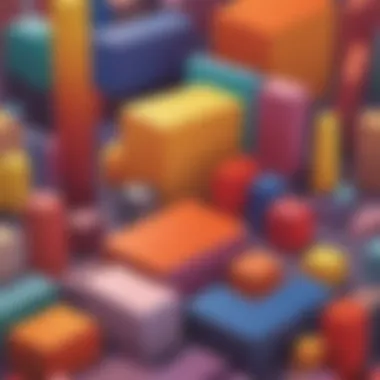

*
P = 2 * (Length + Width)
*
Steps to Apply the Formula
- Add Length and Width: Sum up the two values.
- Multiply by 2: Since a rectangle has two lengths and two widths, we must multiply the result by 2 to find the perimeter.
- Express in the Correct Unit: State your answer with the correct unit of measurement, which typically matches that of the length and width.
By practicing these steps, students can gain confidence and accuracy in their calculations.
Example Problem
To illustrate how to use the identified dimensions and apply the perimeter formula, let's consider an example problem:
Example: A rectangle has a length of 8 meters and a width of 5 meters.
- Identify length and width: Length = 8 m, Width = 5 m.
- Apply the formula
- Conclusion: The perimeter of this rectangle is 26 meters.
- (Length + Width) -> (8 m + 5 m) = 13 m.
- Multiply by 2 -> P = 2 * 13 m = 26 m.
Practicing examples like this can greatly improve understanding of perimeter calculations.
Accurate identification of dimensions sets the groundwork for effective perimeter calculations.
Real-World Applications
Perimeter in Everyday Life
Perimeter is a fundamental aspect of various daily activities. For instance, when you fence a garden or play area, knowing the perimeter informs you how much material you need. The cost of installing those materials can be calculated effectively if you understand the rectangle’s perimeter. Similarly, when creating areas for games, understanding perimeter aids in arranging spaces according to needs.
Children engage in multiple activities where perimeter plays a key role:
- Fencing their pets or crops.
- Measuring carpets that fit perfectly in rooms.
- Arranging furniture ensuring efficient flow of space.
These tangible activities correlate learning with practice, enhancing comprehension. Because of this connection, kids can relate math to talk about values, resources, and spatial planning.
Understanding the perimeter becomes a tool that aids practical decision-making in everyday scenarios.
Perimeter in Design and Construction
In design and construction, perimeter calculations assume greater importance. Whether it’s after school art projects or large exhibitions needing layouts, professionals often measure rectangles meticulously. Professional architects, for example, must measure the perimeter of rooms to optimal design efficiency. Accurate perimeter dimensions allow them to use materials wisely and ensure safety within the structures.
Considerations include:
- Cost Efficiency: Knowing the perimeter means predicting costs of construction materials correctly.
- Artistic balance: Design components balance and enhance when anchored in measurements that consider perimeter.
- Safety regulations: Many building regulations stipulate aspects that involve area and perimeter to ensure the buildings are safe and well-constructed.
These concepts are vital in mature design dialogue, while students diving into such knowledge today prepares them for future responsibilities in architecture or construction.
Cultivating an understanding of perimeter instills confidence that enhances creative problem-solving and decision-making in the real world.
Common Misconceptions
Misunderstandings about perimeter can hinder students’ grasp of mathematical concepts. Recognizing these common misconceptions is vital for addressing potential learning gaps. Students often confuse perimeter with area and might misinterpret lengths involved in these calculations. Clearing up these misconceptions not only strengthens foundation knowledge but also boosts confidence ensure larger concepts are well understood in later studies.
Confusion with Area
A frequent point of confusion is between the concepts of area and perimeter. Area refers to how much space is inside a shape, while perimeter represents the total distance around the shape itself. Children may think that both terms mean the same thing, leading to errors in calculations.
To analyze this confusion:
- Definitions matter. Educators should carefully explain area and perimeter. They should clarify that perimeter is solely concerned with boundaries.
- Visual aids. Graphic representations can help. Drawing rectangles with labeled lengths and widths can provide clarity.
- Practical examples. Using real-life scenarios such as measuring the fence around a garden versus flooring for a room can illustrate the contrast between these concepts clearly.
Length and Width Misunderstandings
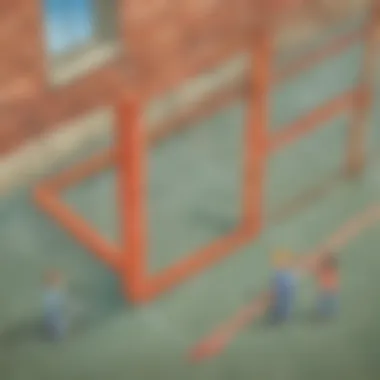
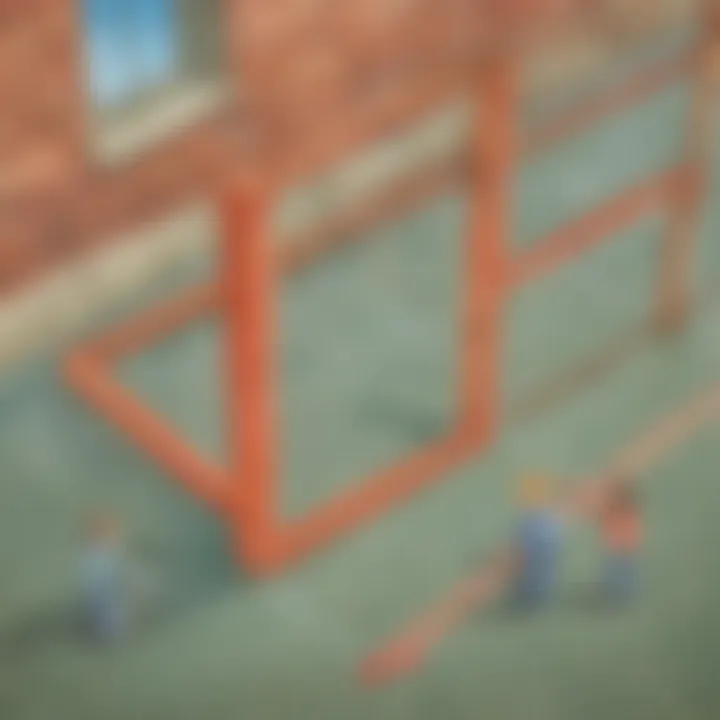
Another misconception involves the understanding of length and width in rectangles. Students may not always identify which dimension corresponds to length and which is width, leading to misunderstanding the perimeter formula. Clarifying these terms plays a significant role in avoiding calculation errors.
- Defining dimensions. Clearly explain that in a rectangle, the length is typically the longer side while width is the shorter side.
- Encouraging visualization. Students can draw various rectangles and practice labeling length and width.
- Hands-on activities. Measuring real-world objects can provide practical understanding. For instance, participants could measure the length of a classroom desk and the width of a book to connect theory with practice, leading to deeper comprehension as well.
The clearer the contrast between perimeter and area becomes, the more confident students will become in applying their knowledge practically.
Practice Problems
Practice problems are vital for reinforcing concepts related to the perimeter of a rectangle. They provide students with the opportunity to apply what they have learned in a controlled environment. These problems also contribute to deeper understanding and retention. The main benefits of these exercises are outlined below:
- Consolidation of Knowledge: When students engage in practice, they test their understanding of the formula and how to use it with actual numbers.
- Identifying Mistakes: Working through problems allows students to identify areas where they might struggle, highlighting concepts that need more attention.
- Preparation for Real-Life Application: Knowing how to calculate the perimeter can be useful in different situations in daily life.
- Boosting Confidence: Completing problems successfully builds self-confidence, motivating learners to tackle more complex challenges.
Therefore, practice problems not only aid in the understanding of theoretical matters, but they also mold practical skills in calculation.
Creating Your Own Problems
Encouraging students to create their own problems is a creative way to enhance understanding. This activity fosters critical thinking by challenging students to consider various scenarios. Additionally, it gets students to apply their knowledge practically. Some tips for creating effective practice problems include:
- Start with basic dimensions of rectangles and gradually increase complexity.
- Use different units of measurement to diversify challenges.
- Include real-world scenarios, such as calculating the perimeter of a garden or a room, which make the problems relatable.
When students compare their problems and solutions with peers, they can also express ideas and intercept different methods of calculation.
Solving Practice Problems
Solving practice problems enhances computational skills related to perimeter computation. Steps to effectively solve practice problems involve:
- Read the Problem Carefully: It is essential to understand what is being asked. Look for key data like length and width.
- Use the Perimeter Formula: Recall the formula P = 2 * (length + width). Make sure to substitute the values correctly.
- Perform the Calculations: Use accurate arithmetic operations to compute.
- Double Check the Work: After arriving at a solution, to avoid mistakes, go over the calculations again.
Practicing in this way not only hones their skills in math but builds a methodical approach to problem-solving—useful knowledge in any field.
Resources for Further Learning
Learning about the perimeter of rectangles can benefit greatly from multiple resources. Accessible literature and online platforms can deepen understanding. They introduce new methods, concepts, and provide visual aids that can help solidify learning. It is important for students to be equipped with several tools at their disposal. Doing so encourages curiosity and a desire for exploration.
Books on Geometry
Books focused on geometry can serve as a vital resource. They cover a range of topics from basic principles to advanced concepts. Some popular books include those focused on visual learning and problem-solving aspects of geometry. For young learners, these books often include illustrations and engaging content to keep interest alive.
Engaging with rigorous geometry books can present materials accompanied by:
- Clear explanations of geometric fundamentals.
- Example problems that resonate with classroom learning.
- Visual diagrams of shapes which can aid in understanding dimensions.
For parents and guardians looking to enrich their child’s learning experience, consider books suited for various age groups. Resources like Geometry for Dummies or A Child's First Book of Geometry represent ideal options geared towards building a strong foundational knowledge.
Online Educational Platforms
Online educational platforms can complement physical books by providing diverse digital resources. Websites like Khan Academy or IXL offer structured courses on geometry, including detailed discussions on perimeter specifics. The benefit of these platforms lies in their accessibility and interactive nature.
Children can learn at their own pace, revisiting challenging sections as many times as needed. Moreover, the use of videos and self-assessment through quizzes makes geometry concepts, notably perimeter, more graspable.
Some advantages of online platforms include:
- Video tutorials that showcase problem-solving techniques.
- Quizzes providing immediate feedback on concepts mastered.
- A range of exercises catering to varying skill levels.
Learning becomes much more effective when Children can interact with multiple types of resources. Keeping the learning experience multifaceted contributes to a deeper grasp of perimeter and geometry as a whole.
The End
A solid grasp of the formula for finding the perimeter, P = 2 * (length + width), will serve as a foundation for tackling more complex problems in the future. By recognizing common misconceptions, students can easily navigate through difficulties. Providing opportunities for practice enhances confidence and competence in this area.
Ultimately, this article equips readers with tools they need to successfully employ these principles in their lives. The horizon of mathematical understanding holds more promise when one has formalities like perimeter calculation well mastered.
Summary of Key Points
To recap, several crucial elements were discussed:
- Definition and significance: A rectangle is defined by its length and width. The perimeter is the total distance around the rectangle.
- Formula dissected: The formula for calculating perimeter straightforwardly combines both dimensions of the rectangle.
- Applications in real-world: Practical uses, like measuring objects and spaces, underscore why perimeter is a needed skill.
- Common pitfalls: We explored usual misconceptions that confuse students, such as the lack of differentiation between area and perimeter.
Encouragement for Further Exploration
This forms a solid groundwork, but mathematics has many layers to explore. Investigation into the broader universe of shapes, angles, and geometric formulas can expand understanding substantially. For those eager to know more about rectangles or simply geometry at large, consider topics such as area calculation, properties of triangles, or even exploring circles. Recommended readings from resources such as Wikipedia or Britannica could serve as potent starting points.
Engagement with online educational platforms and communities like Reddit may enhance learning further. Not only can peers provide support, but they often introduce practical guides and tips that enrich comprehension. Returning to the basics after-gainful knowledge builds further proficiency in these core concepts.







